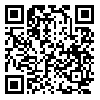BibTeX | RIS | EndNote | Medlars | ProCite | Reference Manager | RefWorks
Send citation to:
URL: http://payavard.tums.ac.ir/article-1-164-en.html
Background and aim: One of the most important technological advancements for monitoring patients -- especially in anesthesia, recovery, and Intensive Care stages -- is pulse oximetry which can measure the oxygen saturation of arterial blood (spo2) and show hypoxemia before it is clinically observable. Therefore, it is necessary for the individuals who are responsible for treating and taking care of patients in critical stages to have sufficient knowledge about it. If they lack the required knowledge, they should be trained using appropriate methods.
Materials and methods: Upon referring to the ORs and the ICUs, a questionnaire was distributed among the medical and paramedical staff (doctors, nurses, anesthesia technicians, etc.) to assess their knowledge of pulse oximetry. The questionnaire had a part for demographic data and 20 true/false items and was to be filled in by the subjects in 15 minutes. After the data were collected and analyzed, the subjects' level of knowledge about pulse oximetry was assessed in terms of age, sex, academic degree, their experience with the device, and how they had obtained information about pulse oximetry. The variable was measured on a 0-20 scale. The subjects would get one point for every correct response and the total number of correct responses would constitute each individual's score.
Results: The results of the study show that only 15.8% of the participants had a high level of knowledge of pulse oximetry. The figure was 61% for those having medium-level knowledge and 23.2% for the individuals with low knowledge. In other words, for the optimal use of the device, 84.2% of the subjects need training. The results also indicate that the subjects' level of knowledge is positively related to their sex, academic degree, and how they acquired their knowledge. In fact, female subjects, paramedical staff, and those who had obtained information from colleagues and the companies selling the device had a lower level of knowledge needed for using the device properly. However, no statistically significant difference was found between the subjects' knowledge of pulse oximetry and their age and experience with the device.
Conclusion: Based on the findings, it is necessary for the female members of paramedical staff to be trained in classes and/or be provided with pamphlets on the issue.
| Rights and permissions | |
 |
This work is licensed under a Creative Commons Attribution-NonCommercial 4.0 International License. |





